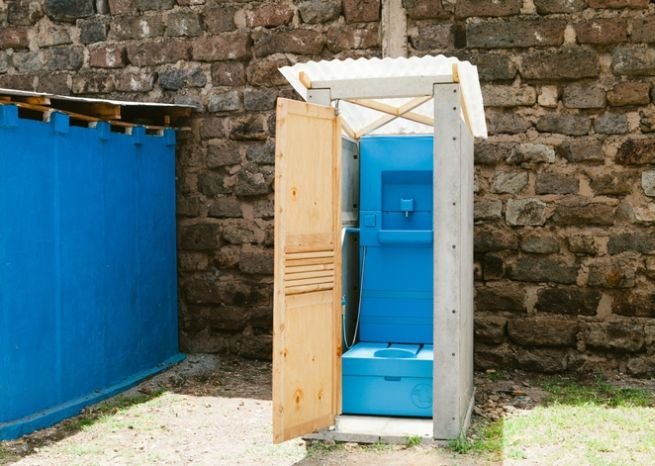We have had the fortune of covering a variety of toilets; with some enticing us with their futuristic designs and some impressing us with their mobility credentials. However this time around, the game is entirely changed with a special toilet mechanism having the capacity to also supply water for its hand-washing sink! We are talking about the incredibly innovative Blue Diversion, a self-contained toilet unit designed by Swiss Federal Institute of Aquatic Science and Technology (Eawag).
Like any other regular toilet, the human waste (like feces and urine) along with flushed water goes down with gravity inside the Blue Diversion. And, this is where the similarity ends. The ingeniously contrived toilet design stores the human waste in sealed compartments for further usage as fertilizer. On the other hand, the water used for flushing is once again re-circulated to be used for washing hands from the sink.
Now, isn’t that disgusting?! Well the finicky among us shouldn’t really mind; as the water, before reaching the sink pipe, is pumped upwards and thoroughly filtered by various built-in systems. These entail: a bio-reactor that helps in eliminating organic matter and ammonia, and a special ultrafiltration membrane that screens the bacterial and viral organisms. Lastly, the remaining amount of ‘organic filth’ is effectively neutralized by an advanced electrolysis unit, which additionally concocts chlorine to purify the water.
The cleaned water then flows into the sink plumbing by virtue of plain gravity, and voila; we have hand-washing quality water salvaged from our very own wastes! And, the good part is – in spite of its gimmicky nature, the Blue Diversion has seen some successful tests in African countries like Uganda and Kenya, with over 50 water recycling patterns per day.
The commercial scope however goes beyond the toilet’s usage in less developed countries. The creators are in fact looking for potential collaborators to market the contrivance as an off-grid, self-sustaining toilet/water supplying mechanism. Consequently, the retail price for each system is expected to be around the $500 mark.
Via: TreeHugger








